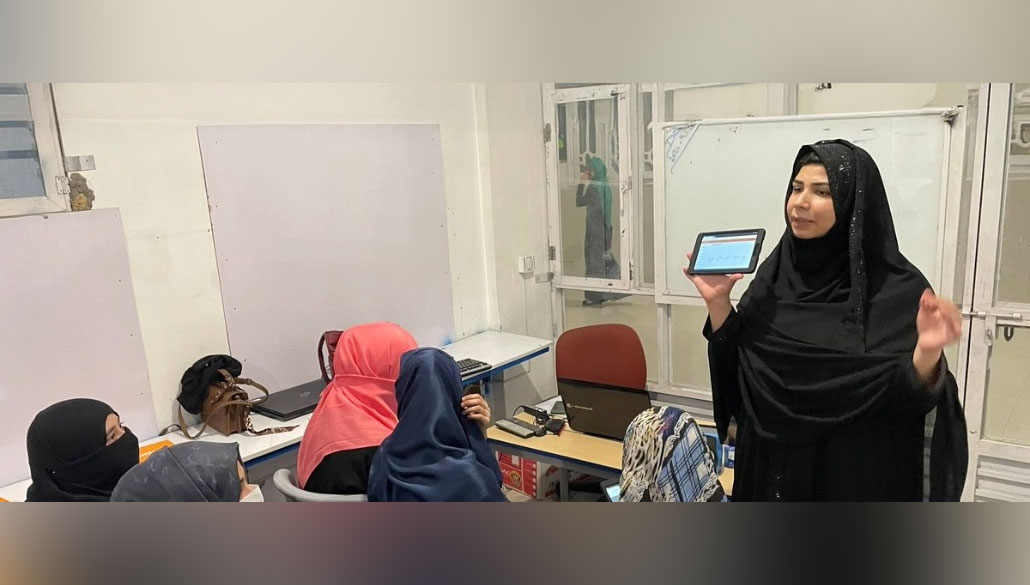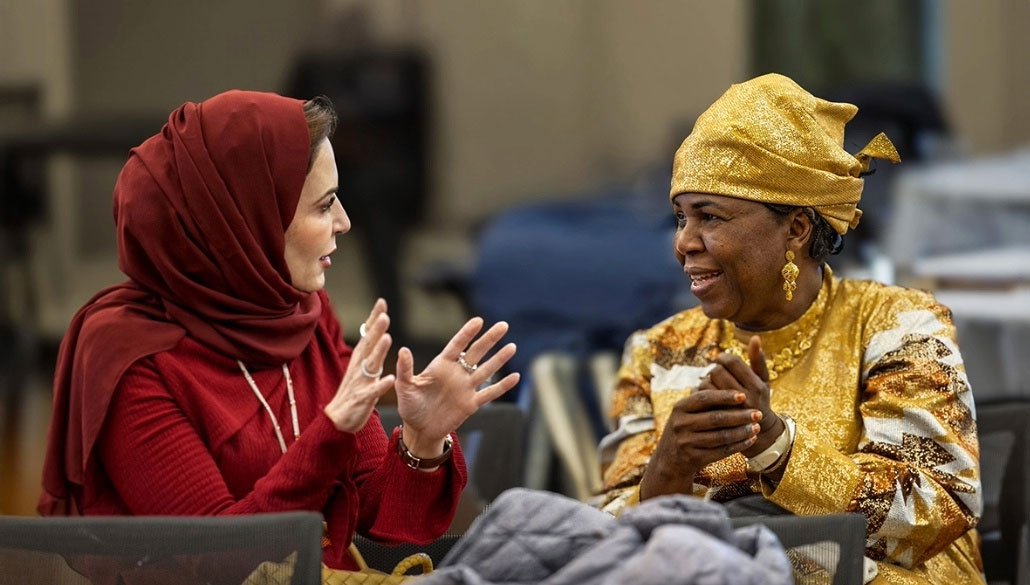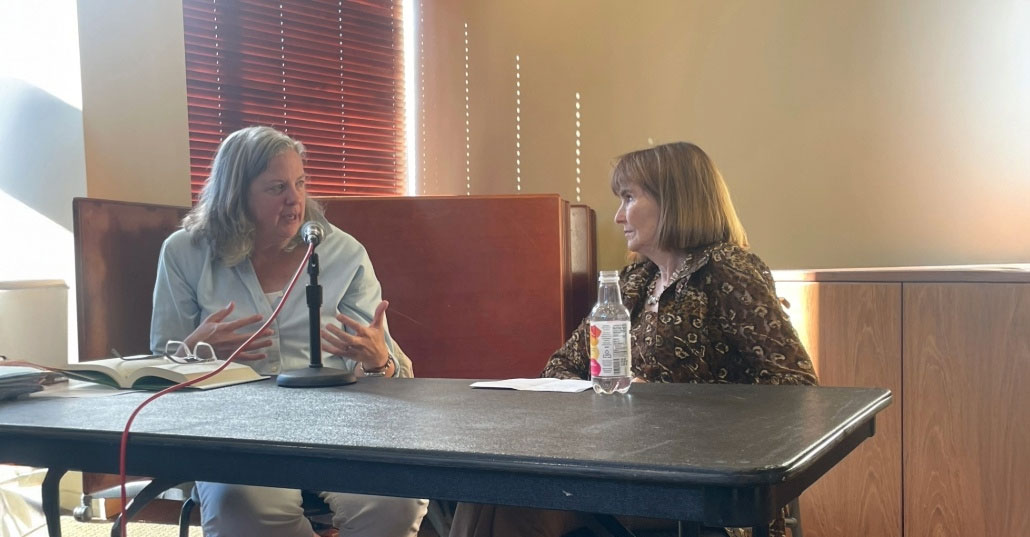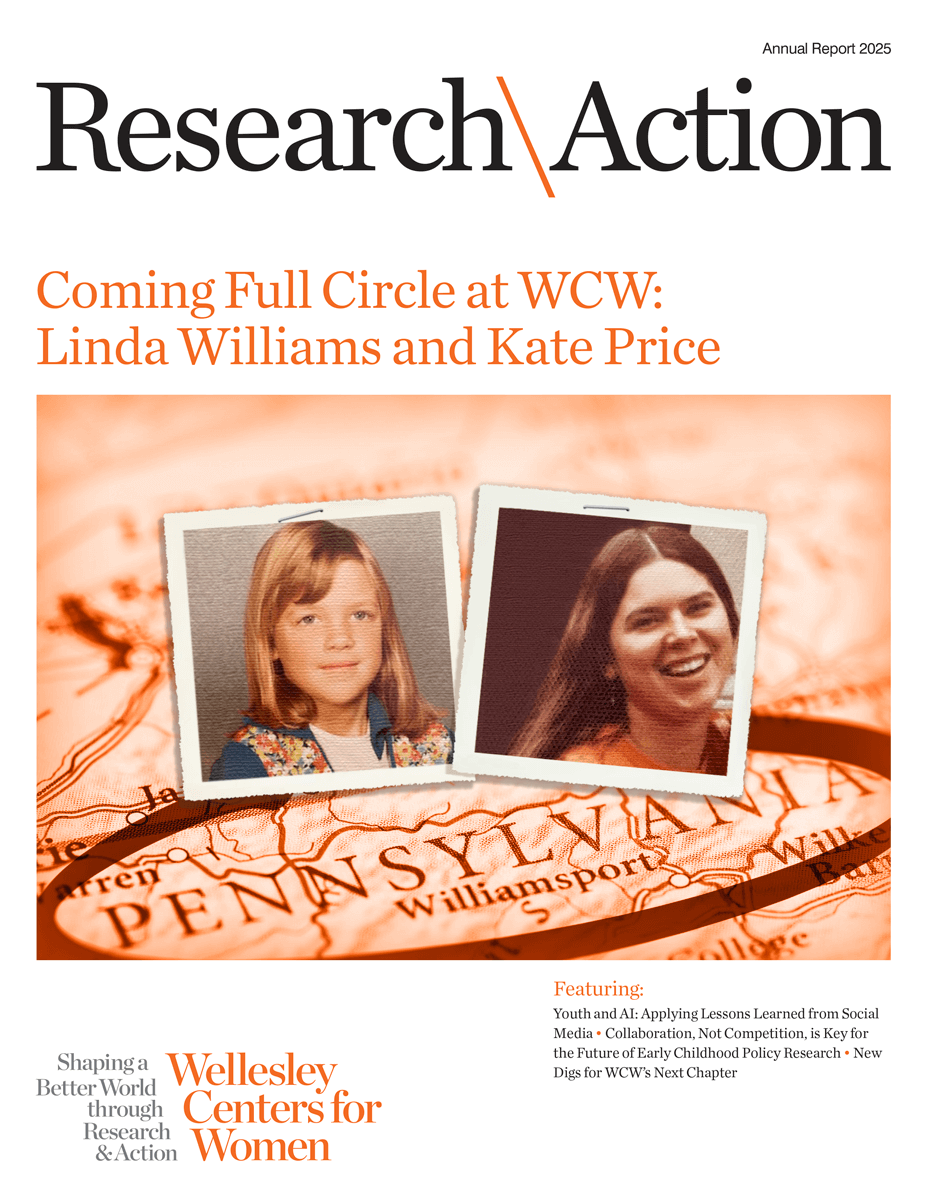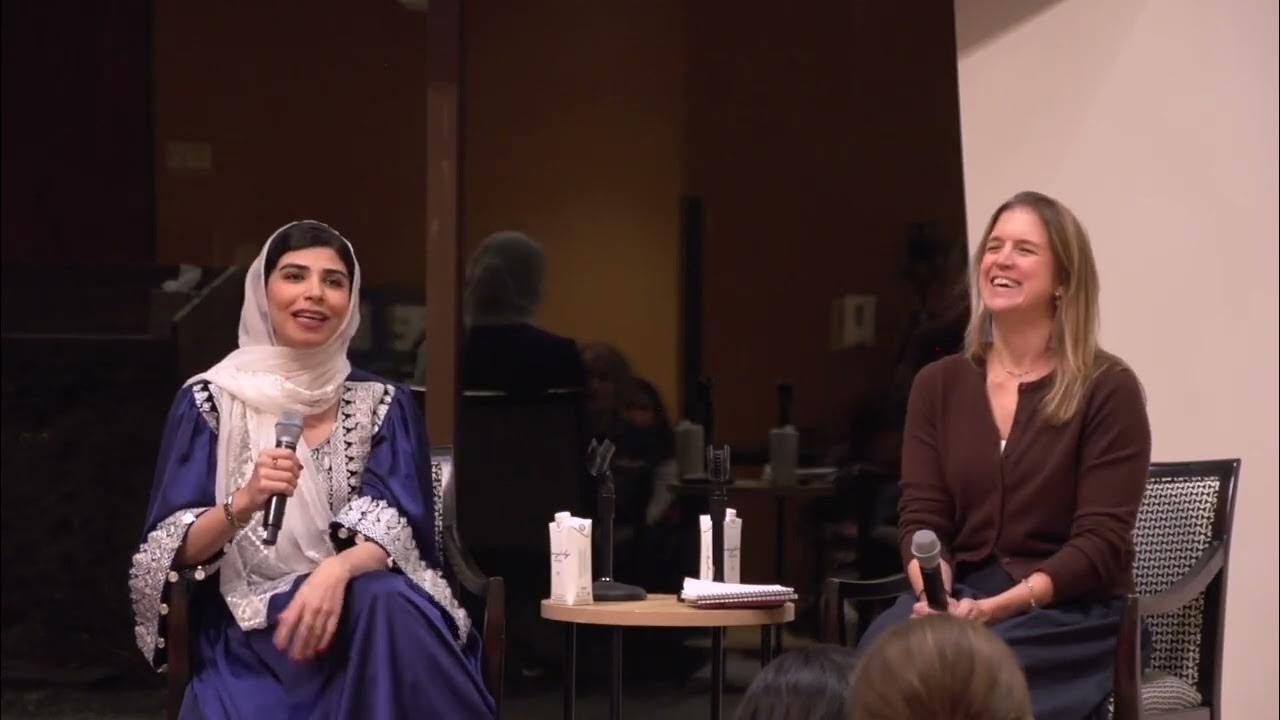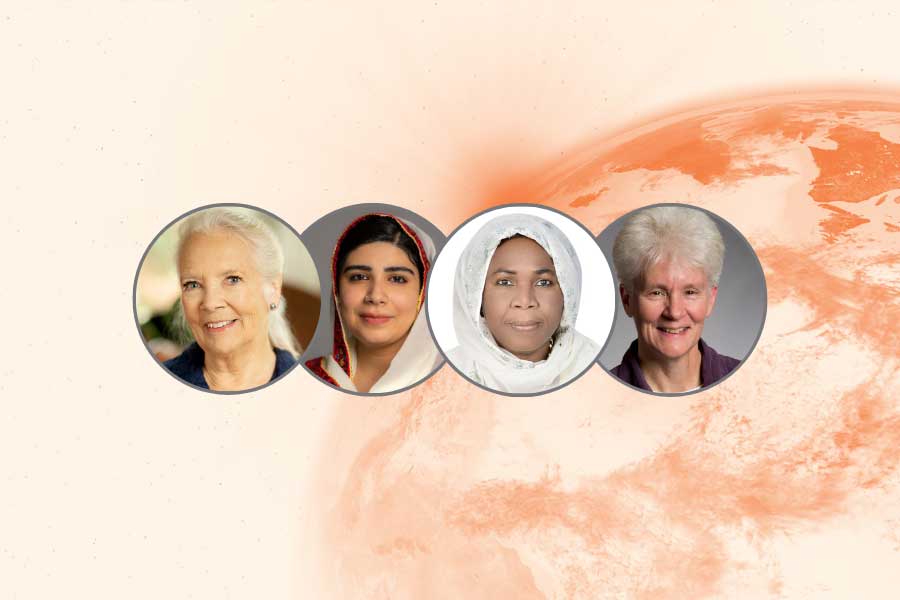Research & Action Report, Spring/Summer 2010
by Rangita de Silva-de Alwis, S.J.D.
Women in a Changing China—March 8, 2010
Below is an excerpt of a testimony offered by Rangita de Silva-de Alwis, S.J.D., director of international human rights policy programs at the Wellesley Centers for Women. [The hearing was convened March 8, 2010, pursuant to notice, at 2:00 p.m., in room B-318, Rayburn House Office Building, Douglas Grob, Co-chairman’s Senior Staff Member, presiding.] Also present were Charlotte Oldham-Moore, Staff Director; Kara Abramson, Advocacy Director; Abigail C. Story, Manager of Outreach and Special Projects; Anna Patella, Congressional-Executive Commission on China; and Lindsey Purdy, Lagai Research Foundation.
At this CECC Roundtable, a panel of experts explored the Chinese government’s progress and challenges in addressing women’s rights issues. China ratified the Convention on the Elimination of All Forms of Discrimination against Women in 1980. Thirty years later, what has been the impact of this commitment? What progress has been made at the central and local level toward greater protection of women’s rights? What specific challenges remain?
Testimony by Rangita de Silva-de Alwis:
The Beijing Women’s Conference in 1995 and its progeny, the Beijing Platform of Action, marked a watershed event in the history of local and global women’s movements. The clarion call to take Beijing back home resonated, both locally and globally, and reverberated in China.
Fifteen years after this historic event and 30 years after the landmark Convention on the Elimination of All Forms of Discrimination against Women, the CEDAW, is an important political moment for us to reflect on this twin legacy and how this has catalyzed gender-based lawmaking and mobilized women’s groups in China to hold stakeholders accountable to both the letter and the spirit of the guarantees enshrined in the CEDAW.
In the final analysis, as a universally recognized norm-setting instrument, the CEDAW has become a powerful benchmark for women’s rights groups in China to monitor the implementation of existing legislation. Most importantly, as a universal bill of rights for women, the CEDAW legitimizes and augments the voices of Chinese women’s rights groups in their call for law reform and practice in China. These calls in China are a call of reforms taking place in analogous areas in other countries, however, international norms are sometimes a double-edged sword.
Despite the fact that they are powerful tools to advocate for, and monitor, women’s rights, China and the Chinese state party, too, has cloaked weak law-making in the garb of international norms. In spite of the rhetoric of the Chinese state, which emphasized at the CEDAW committee hearings in 2006, that the new reforms to the law were governed by the CEDAW.
CEDAW concluding observations made after the fifth and sixth state party report in 2006 were very similar, too, and reinforced prior concluding observations made after the third and the fourth state party report in 1999. This leads one to question the actual impact of the concluding observations on the state. What in fact had been adopted were the forms, and not the substance, of international human rights norms.
Juxtaposed with the state’s change-resistant articulation of women’s rights, China’s women’s rights practitioners’ innovative views of international women’s rights norms has powerful transformative potential.
The 2005 reforms on the law on the Protection of Women’s Rights and Interests of 1999 was a milestone in women’s rights advocacy in China and it spawned a panoply of gender-based law reform initiatives, both locally and nationally.
The new and incubating developments in gender and the law in China are the result of reform initiatives that have sparked local to global engagements. Firstly, the new law manifests a marked movement away from paternalistic notions on the protection of women and embraces a more human rights-based concept of the empowerment of women.
Secondly, and in direct consequence of the ambiguity and the aspirational nature of the national laws, women’s groups have redirected their efforts to mobilize strong guidelines at the provincial level, thus creating greater opportunities for the vindication of women’s rights at the local level.
Although domestic violence has now been clearly prohibited in China, China still lacks national legislation on domestic violence. The existing prohibitions do not harmonize with international guarantees. Women’s groups have again been creative in their search for redress and have seized for themselves the mantle of change. Some of the most widespread new developments in the area of domestic violence law and policy making, and women’s rights groups have helped shape a trail of reform in this area.
The Supreme People’s Court’s Trial Guide to Domestic Violence-Related Cases in 2008 breaks new ground by providing protection orders in pilot courts under limited circumstances. Leading women’s rights advocates hail this as a small step in legal theory, but a big step in judicial practice. The challenge now is to expand the protective orders beyond the nine pilots and push the boundaries of its scope.
Informed and animated by international guarantees and new developments in domestic violence lawmaking around the world, the anti-domestic violence network of China has developed a strong experts’ draft on domestic violence. This experts’ draft is a blueprint for national law reform and embraces many of the international law definitions of domestic violence. However, deep-seated traditional mores, such as son preference and devaluation of the girl-child, are inextricably interrelated to violence against women and must be captured in any narrative on women’s rights law reform and practice.
Despite more women in employment, the feminization of part-time work; gender bias in advertisements and recruitment; sex segregation in employment; the commodification and objectification of women; ghettoization of women in lower-ranking employment; the over-inclusion of protections in the law that stereotype and subordinate women; family responsibility-based discrimination; and cross-cutting and multiple forms of discrimination continue to disadvantage and subordinate women in China. Differential retirement practices that force both blue collar and professional women to retire ten years ahead of their male counterparts are some of the biggest threats to economic development in China.
The law of employment promotion, in 2008, broke new ground by outlawing discrimination on the grounds of nationality, race, gender, religious belief, et cetera. The labor contract law, which came of age in 2008, too, reflects a paradigm change in labor relations, as it articulates that a contract must be based on principles of fairness, equality, and negotiated consensus.
Despite these good-faith efforts, these laws have had a disproportionate impact on women workers and more women have been forced into part-time employment. The under-implementation of these laws in a time of global economic strain is a threat that runs through most laws.
In the absence of a national anti-discrimination law, anti-discrimination scholars and practitioners in China have developed a model anti-discrimination law based on International Labour Organization guidelines and other international norms. This draft, known as the Experts’ Draft on Anti-Discrimination, outlaws discrimination based on multiple grounds of discrimination, including nationality, gender, religion, and sexual orientation. And these experts’ drafts, which are unique to China, are often blueprints for reform and catalysts for action.
A similar experts’ draft on sexual harassment and a sexual harassment guidelines for companies are exciting new developments initiated by Chinese scholars and once again augment the call for international guarantees.
These dynamic initiatives by civil society scholars fill the lacuna left by inoperable and hortatory laws. For example, although the revised Law on Protection of Women’s Rights and Interests, for the first time, outlawed sexual harassment, this prohibition only remains aspirational.
The law does not provide a definition of sexual harassment, nor the elements of the offense. So far, of the 19 national cases that have gone to courts, not a single case has articulated sexual harassment as a cause of action, but based a claim for damage on other provisions in the law.
The face of poverty in China is that of rural women. Due to patriarchal norms, maledominated village committees and autonomous village committees’ regulations, women who are married out, divorced, widowed, or single are deprived of access to land tenure or responsibility law. Here, too, women’s rights leaders have seized the opportunity for reform to call for a form of judicial review of village committee rulings and more egalitarian decision-making at the village levels to amplify women’s voices in community affairs.
To read de Silva-de Alwis’ concluding remarks, transcripts of all the testimonies, and questions and answers from congressional leaders, please visit: http://cecc. gov/pages/roundtables/2010/20100308/index.php

